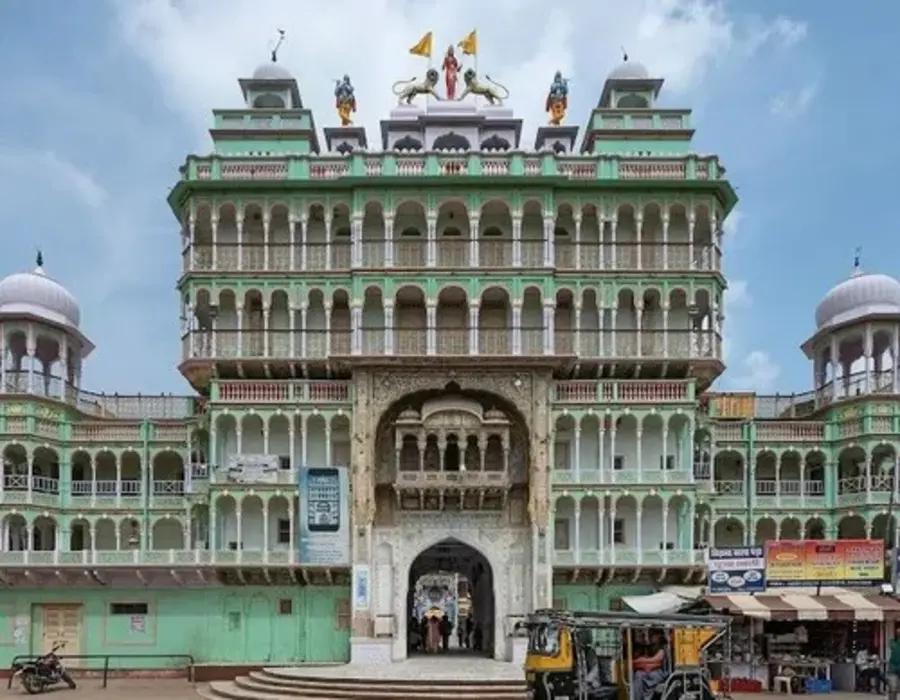
Sacred Charm of Rani Sati Mandir in Shekhawati
Nestled in the historic Shekhawati region of Rajasthan, the Rani Sati Mandir stands as a revered shrine dedicated to Rani Sati, a goddess venerated for her virtues and sacrifices. This temple, with its rich history, stunning architecture, and spiritual significance, attracts pilgrims and travelers seeking to connect with its divine heritage. In this blog post, we’ll delve into the historical background, architectural splendor, spiritual importance, and practical tips for visiting the Rani Sati Mandir.
Historical Significance
1. Origins and Legends:
The Rani Sati Mandir is dedicated to Rani Sati, a figure celebrated in local legends for her selflessness and devotion. According to folklore, Rani Sati was a noble queen who made significant sacrifices for the well-being of her family and her kingdom. Her unwavering dedication and piety earned her reverence and a place in the hearts of her followers. The temple was built in her honor, serving as a focal point for worship and devotion.
2. Historical Context:
The temple’s origins trace back several centuries, reflecting the cultural and religious milieu of the time. It has been a significant site of pilgrimage and spiritual activity in the Shekhawati region, playing a vital role in the religious landscape of the area.
Architectural Splendor
1. Traditional Architecture:
The Rani Sati Mandir showcases traditional Rajasthani architectural styles with intricate carvings and detailed artistry. The temple features ornate pillars, beautifully carved doorways, and a grand façade that exemplifies the craftsmanship of its builders. The use of local materials and artistic designs contributes to the temple’s distinctive charm.
2. Main Sanctum and Interiors:
Inside the temple, the main sanctum houses the idol of Rani Sati, adorned with vibrant decorations and offerings from devotees. The interiors are adorned with elaborate murals and carvings that depict various scenes from the goddess’s life and the legends associated with her. The temple’s design creates a serene and sacred atmosphere conducive to worship and reflection.
3. Temple Complex:
The Rani Sati Mandir complex includes several smaller shrines and courtyards, adding to the temple’s grandeur. The surrounding areas are well-maintained and provide a peaceful environment for visitors to explore and engage in spiritual practices.
Spiritual Significance
1. Devotion to Rani Sati:
The Rani Sati Mandir is an important site for devotees of Rani Sati, who visit to offer prayers, seek blessings, and participate in religious rituals. The goddess is revered for her virtues and her role as a protector and guide. Her followers believe that worshipping her can bring peace, prosperity, and divine intervention.
2. Festivals and Rituals:
The temple hosts various festivals and rituals throughout the year, attracting large numbers of pilgrims. Major festivals such as Navratri and Diwali are celebrated with special ceremonies, processions, and community gatherings. These events create a vibrant and spiritually enriching atmosphere for visitors.
Visitor Experience
1. Spiritual Practices:
Visitors to the Rani Sati Mandir can engage in various spiritual practices, including offering prayers, participating in rituals, and meditating in the temple’s tranquil environment. The temple provides a space for personal reflection and connection with the divine.
2. Cultural Exploration:
Explore the cultural and historical context of the Rani Sati Mandir by interacting with local priests and devotees. Their insights offer valuable information about the goddess, the temple’s history, and the traditions observed by the community.
3. Photography and Sightseeing:
The temple’s architectural beauty and intricate carvings make it a great spot for photography. While photography is generally allowed, it is important to be respectful of temple rules and the privacy of worshippers. Enjoy the local culture and the scenic surroundings of Shekhawati during your visit.
Practical Information for Visitors
1. Timing:
The Rani Sati Mandir is typically open to visitors throughout the day, from early morning until late evening. It is advisable to check the specific timings before planning your visit, as they may vary depending on religious ceremonies and special events.
2. Dress Code:
Dress modestly and respectfully when visiting the temple. Traditional attire is appreciated, and it is customary to remove footwear before entering the temple premises. Ensure that shoulders and knees are covered as a sign of respect.
3. Travel and Accessibility:
The Rani Sati Mandir is located in Shekhawati, which is accessible by road from major cities in Rajasthan. Local transportation options include taxis, buses, and auto-rickshaws. Plan your journey in advance and be prepared for possible traffic congestion during peak travel times.
The Rani Sati Mandir in Shekhawati is a sacred site that offers a unique blend of historical depth, architectural beauty, and spiritual significance. Whether you are a devotee seeking divine blessings, a history enthusiast exploring cultural heritage, or a traveler appreciating the rich traditions of Shekhawati, this temple provides a meaningful and enriching experience.
We invite you to visit the Rani Sati Mandir and immerse yourself in its divine atmosphere and historical splendor. May your visit be filled with spiritual fulfillment, cultural insights, and cherished memories.
